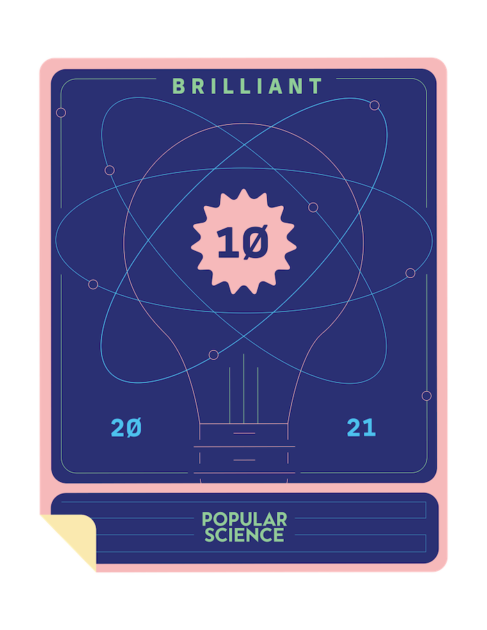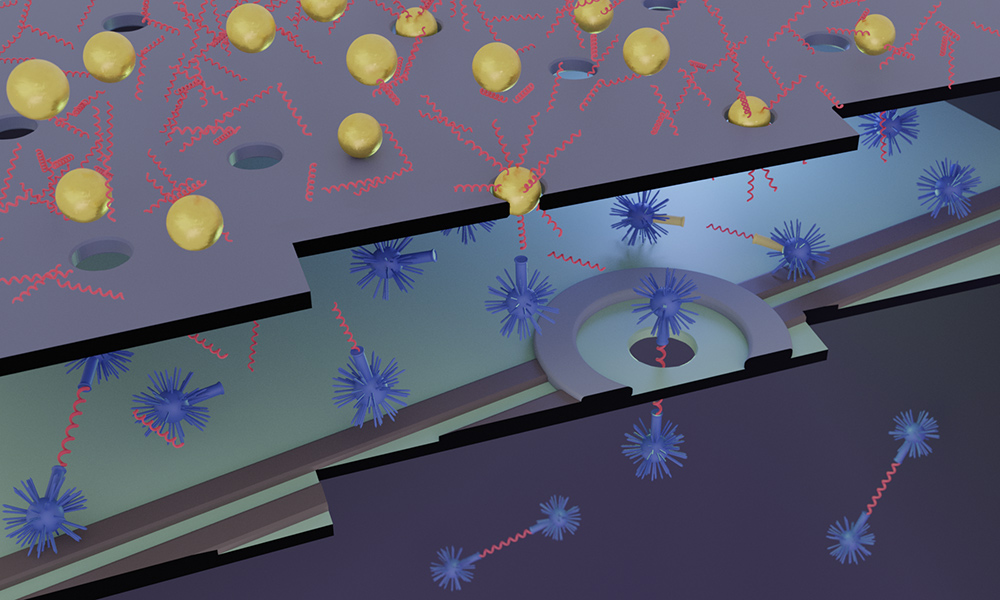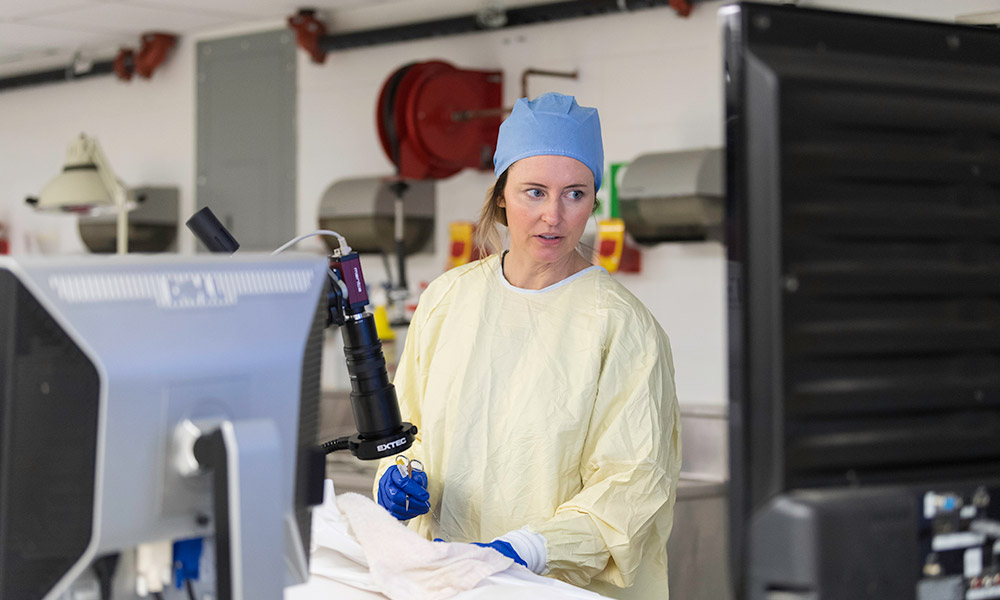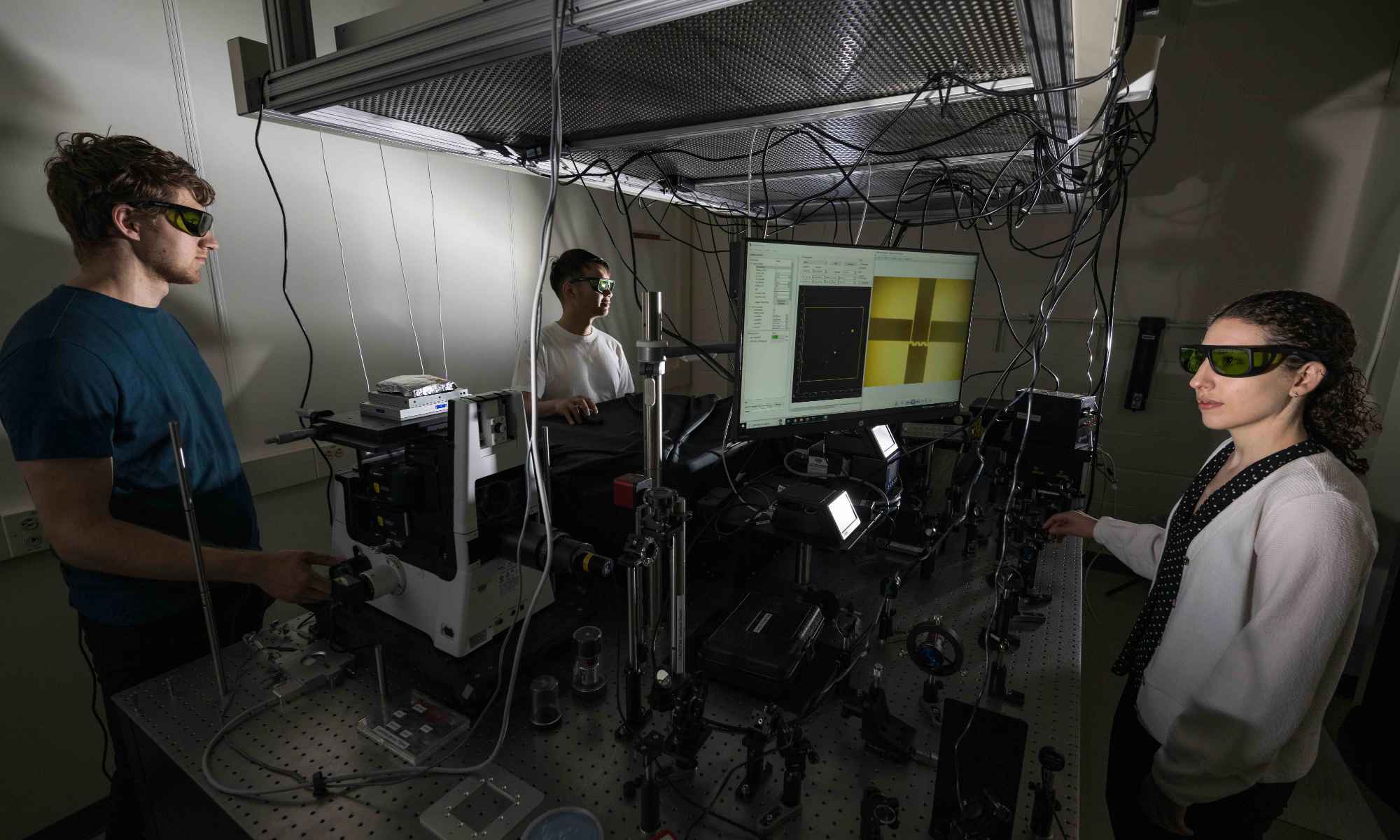Rochester biomedical engineer Michael Giacomelli is pursuing a quicker way to detect skin cancer.
In order to establish a new generation of talented researchers, the University of Rochester’s Wilmot Cancer Institute went on a recruitment spree to draw young wunderkinds from top institutions around the world.
One of them—Michael Giacomelli, an assistant professor of biomedical engineering—has been selected as one of Popular Science’s Brilliant 10, a roster of early-career scientists and engineers whose work is moving the goalposts in their respective fields.
“Reprising the Brilliant 10 awards after a five-year hiatus allows us to showcase all the ways fresh perspectives can address challenges—both old and new,” says editor-in-chief Corinne Iozzio. “We’re excited to see how Michael’s work to make microscopy more compact and accessible can help health care professionals address cancers more quickly.”
Real-time skin cancer assessment
 Giacomelli, who joined the University in 2018, is developing novel technology that would enable surgeons to detect within minutes whether a potential nonmelanoma skin cancer is malignant and, if so, whether surgery to remove it is successful.
Giacomelli, who joined the University in 2018, is developing novel technology that would enable surgeons to detect within minutes whether a potential nonmelanoma skin cancer is malignant and, if so, whether surgery to remove it is successful.
Nonmelanoma skin cancers (NMSC), though less lethal than melanomas, are far more prevalent, resulting in 5 million biopsies and 1.5 million surgical procedures each year in the United States. Moreover, diagnosis and treatment can be overly time consuming, costly, and less accessible in some regions. For example, during the Mohs (microscopically controlled) surgery used in many cases, removed tissue must first be frozen to confirm the cancer was entirely removed, greatly increasing the time and cost of the procedure.
Giacomelli has received a $1.6 million National Institutes of Health R37 grant to fund his efforts to enhance two-photon fluorescence microscopy (TPFM) as an alternative imaging system that would allow clinicians to see in real time whether the margins of removed NMSC tissue are “clean.” This would eliminate the need to send tissue off to be frozen first. He will incorporate recent advances in detector and laser technology to reduce the cost, shrink the size, and enhance the contrast of existing TPFM technology.
He will also test whether TPFM could be used in diagnosing and treating a less common skin cancer for which no intra-operative imaging is currently practical.
At one time in history, Giacomelli says, biopsies were studied by candlelight. But now, he adds, the new technology he’s developing “has jumped 100 years into the future.”
Read more
 Smaller is better for detecting biomarkers of trauma and cancer
Smaller is better for detecting biomarkers of trauma and cancer
Detecting tiny biomarkers circulating in our bodies is problematic and costly. Researchers are developing a cost-effective detection device using nanotechnology.
 Women of invention: How Rochester faculty find success as patent holders
Women of invention: How Rochester faculty find success as patent holders
The University of Rochester ranks fourth among US universities in its percentage of international patent holders who are women.



